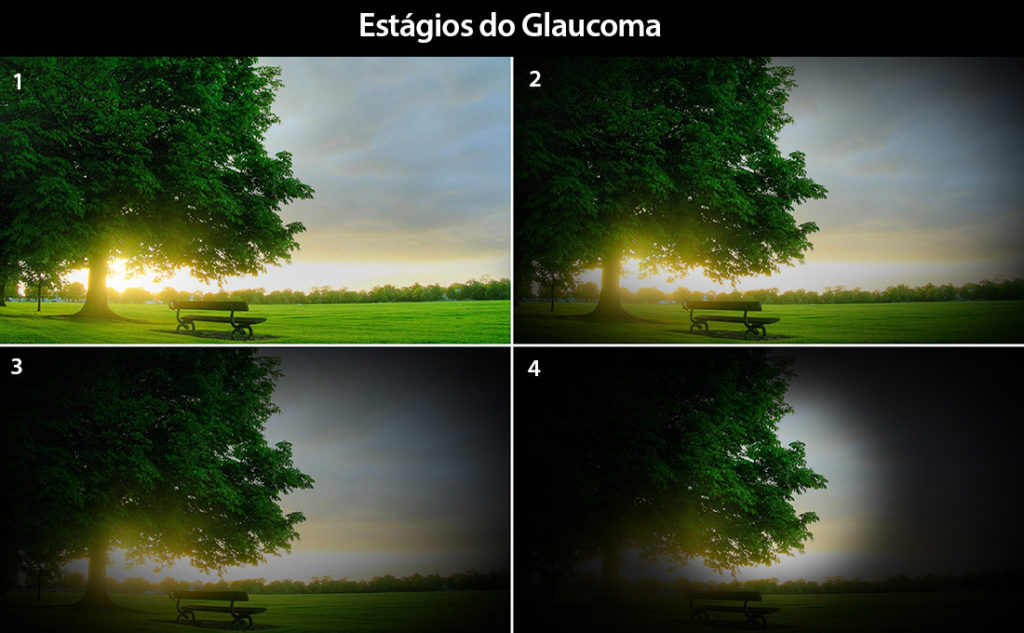In most cases, the image of an eye with glaucoma is exactly the same as that of a normal eye.
It is a condition in which there is an increase in intraocular pressure (pressure of the eyes), damage to the optic nerve and loss of visual field. It is a disease of a genetic and treacherous character, for most of the time it is insidious, silent. It does not cause pain in most patients. More than 95% of glaucoma sufferers do not feel any pain, which impairs an early diagnosis.
Inside the eyes, the production of a liquid called aqueous humor occurs. This liquid is of extreme importance to nourish the eye cells, but must be drained and renewed constantly. When there is a drainage failure or increased production of this fluid, the pressure of the eye increases. The continent (eye) does not expand in the adult. If the content (aqueous humor) increases, there will certainly be an increase in intraocular pressure.
Early diagnosis is the best way to guard against it. Measurement of intraocular pressure is extremely important during consultation with the ophthalmologist. Even children and adolescents should have measured eye pressure.
The treatment of congenital glaucoma is always surgical and urgent. The earlier detected and treated, the better the prognosis.
- The diagnosis of glaucoma is based on three aspects:
• High intraocular pressure;
• damage to the optic nerve;
• Loss of visual field, diagnosed by the examination called campimetry. In adults, the most common types of glaucoma are:
• Simple chronic glaucoma. Also called open-angle glaucoma.
• Acute glaucoma. Also called narrow-angle or closed-angle glaucoma.
The two are completely distinct, with different diagnosis and treatment. The most common is the simple chronic, open-angle. It accounts for close to 90% to 95% of all forms of glaucoma. This type is painless and asymptomatic until its later stage. The initial diagnosis is only possible during consultations with your ophthalmologist. 
The cause of open-angle glaucoma is unknown, but it is known how to treat it so that it does not cause blindness. Unfortunately, simple chronic open angle glaucoma is still one of the biggest causes of blindness in the world. The second type of glaucoma accounts for less than 5% of cases. It is called acute because it occurs suddenly. It appears suddenly, with high pressure, generally above 45 mm Hg.
The pain resulting from this form of glaucoma is, in most cases, very severe, causing nausea and vomiting, which can generate a great diagnostic mistake, since the patient often complains more about the gastric condition and goes to a doctor of this type specialty (gastroenterologist). One should be aware of the other symptoms of this type of glaucoma. Usually it comes accompanied by eye pain, red eye, dilated pupil and paralytic, that is, does not react to the light, and the vision is blurred.
- Negligence can have irreparable consequences in cases of glaucoma. Therefore: • Avoid procrastination when seeking medical help.
• Take treatment seriously.
• Properly use the medication proposed by your ophthalmologist.
• Go to the proposed returns on the scheduled dates.
• Consult your ophthalmologist at least once a year.
• Remember: only he can diagnose and treat this pathology 


